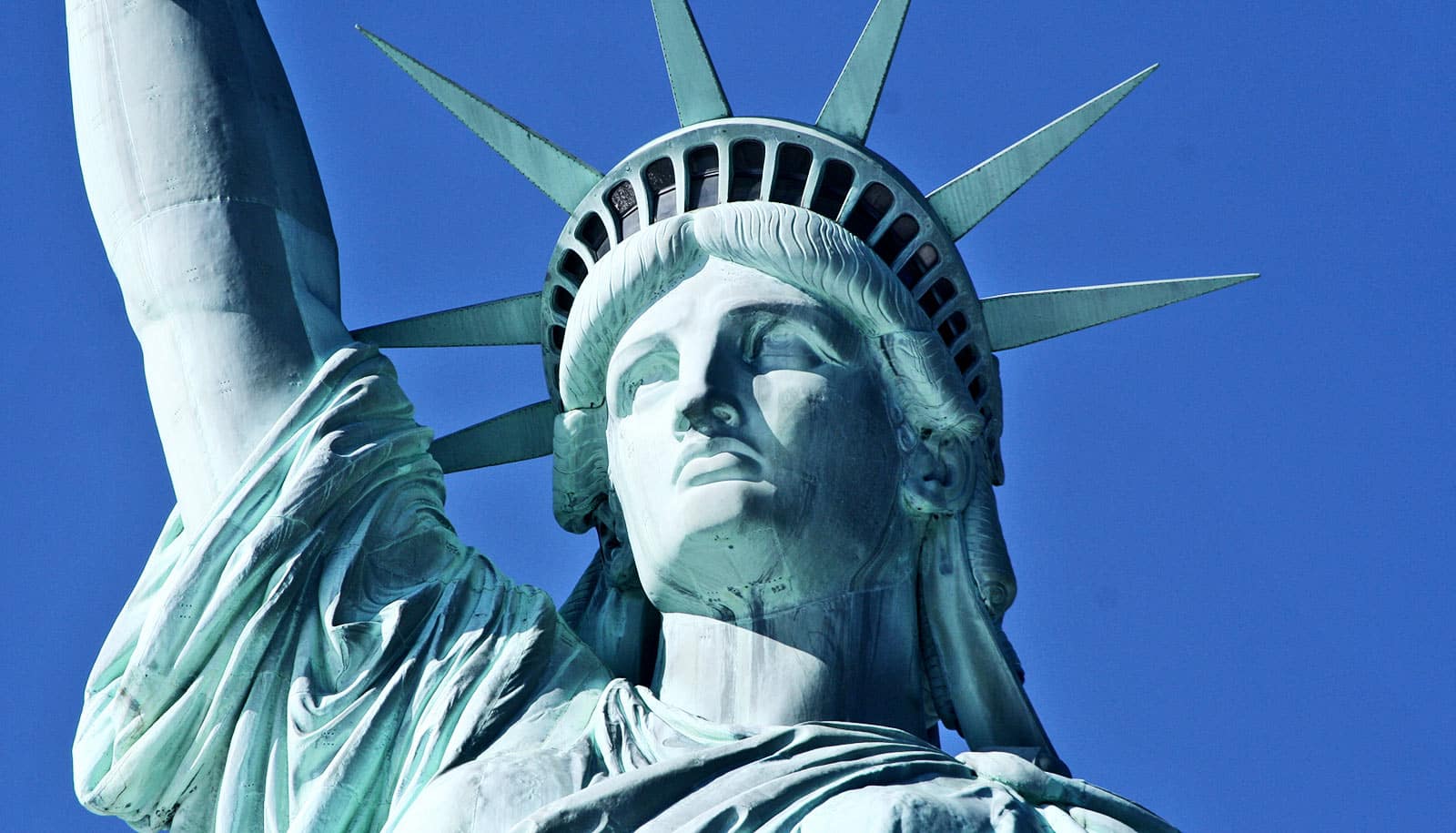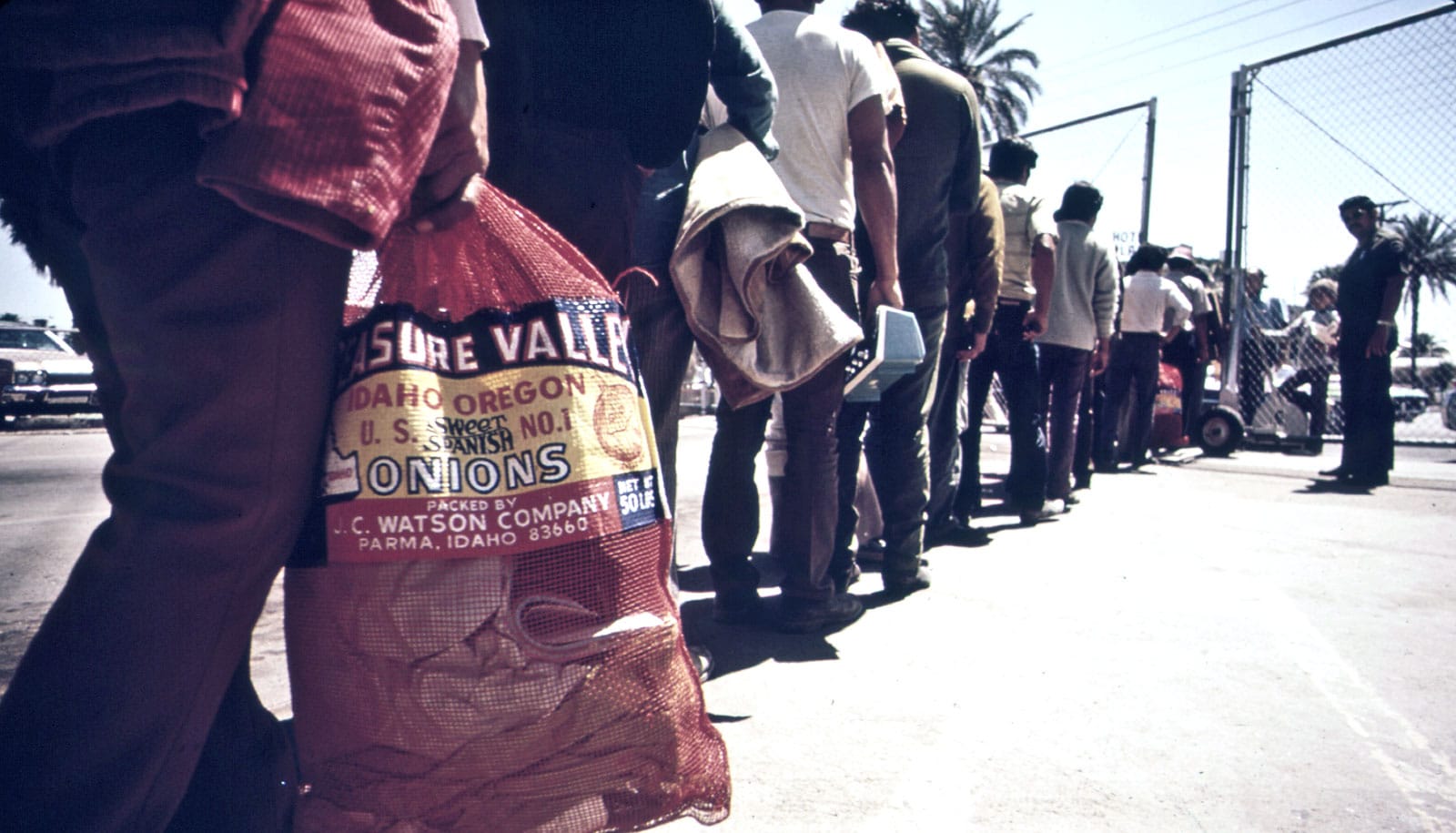A new book and website explores how the Immigration Act of 1965—along with technological advances in communications and transportation affecting immigration—continue to shape American society today.
When President Lyndon B. Johnson signed the law on October 3 of that year, it eliminated quotas that effectively kept Asians, Africans, and other ethnic groups out of the United States.
Johnson downplayed the potential reach of the law, but it would prove to be the catalyst for a new, more diverse country, says John S.W. Park, a University of California, Santa Barbara, professor of Asian American studies.
In his new book, Immigration Law and Society (Polity Press, 2018), and its accompanying website, he examines the landmark legislation and its role in reshaping the racial and political landscape in the US.
“That’s the centerpiece,” Park says. “Initially, when President Johnson signed the Immigration Act of 1965, he promised that it wouldn’t change America, that it wouldn’t be revolutionary.” Johnson would prove to be strikingly wrong.
Trains, planes, and… televisions?
Politicians from the right and the left have complained for decades that the immigration system is “broken.” But Park notes that two technological revolutions have transformed and driven migration into the US over the past 50 years: one in communications and the other in transportation, a pair of genies that won’t go back in the bottle.
The internet and mass media have opened up the world, and air travel has made it accessible. Our technology, he asserts, has surpassed the ability of our modern nation-states to remain stable. With millions of people crossing international boundaries every year, seeing how the other half lives has never been easier.
“If you’re living in a remote area of Mexico, you can still see what Santa Barbara looks like through television, through popular media,” Park says. “You can see how another life is possible.”
Asian migration
And while he says that Mexicans and Central Americans are central to the current debate about immigration in this country, Park notes that other ethnic groups—especially Asians—figure prominently in the migration narrative after 1965.
A little background: American history was not kind to Asians. The Chinese Exclusion Act of 1882 was the first law that banned a specific ethnic group from immigrating to the US. The law was “justified” because of the widespread belief that Chinese were incapable of assimilating, and that Americans would never accept them.
Although the law was repealed in 1943, quotas kept Chinese immigration to roughly 100 persons per year, and migration by other Asians was practically nonexistent. In contrast, 90 percent of the people who came to America between 1876 and 1920 were from Europe.
“Between 1880 and 1965 there really is no huge or significant migration of Asians,” Park says. “Asians [at the time] were less than 1 percent of the US population.”
Enter the Immigration Act of 1965. In addition to abolishing quotas, the law was designed to reunite families and attract skilled labor. As Park says, Johnson’s thinking went like this: Most colleges and universities were in Europe, so if we’re going to privilege skilled migrants, they’ll probably be Europeans. In a similar way, most Americans had close relatives in Europe, so family reunification would likely also benefit Europeans.
According to US Census Bureau data, there were more than 17 million Asians in this country in 2016. When Johnson signed the Immigration Act there were less than 1.5 million, Park says. Even when immigration rules became more restrictive after 1980, Asian migrants continued to arrive in large numbers.
Open borders… for the rich
What accounts for this explosive growth? Park argues that immigration rules prioritized migrants by class and by level of education, not race. He explains that “reforms” in immigration law have made it relatively easy for the well-to-do to gain legal residency here. Many Asian immigrants live in large, established communities in Northern and Southern California.
“If you have over a million dollars or if you have means—for folks like that, we already live in a world that is essentially like an open-border system,” he says. “We’re not blocking people who are wealthy from coming here. We’re in fact stimulating it.
“At the height of the Chinese exclusion period there were probably fewer than 150,000 Chinese people in the entire United States,” Park continues.
“We are migrating twice that number every year from Asia, and yet there has been no significant backlash. Nowadays we see at least a quarter-million Asians. Sometimes it’s nearly half a million Asians coming to the United States every year in skill categories and investor categories. And most of them are coming legally to work and to settle,” he explains.
U.S. has ‘pulled the welcome mat’
For poorer migrants at the border, circumstances are quite different. The vast majority are poor and coming from violent, unstable countries. The US has pulled the welcome mat, Park says, after decades of looking the other way while enjoying the economic benefits of low-skilled migrant labor.
During World War II, the US brought in Mexican workers—braceros—to work in a number of industries. Many agricultural producers, for example, became somewhat dependent on these foreign workers.
“Once the Americans stimulated that pattern, it was hard to undo,” Park notes. “In the case of Mexico, it’s largely the Americans who went to Mexico first, rearranged migration patterns in Mexico, and that’s in part why we see so many Mexican migrants to this day in the United States.”
Even though Central Americans and other migrants travel through Mexico to arrive at the southern border, he says, they’ve taken pathways Americans established and often built decades ago.
‘Troubling parallels’ with the past
Today, amid new policies of exclusion and mass deportations, hundreds of migrant children remain locked in detention centers after federal immigration officials separated them from their parents at the border. Park says he sees troubling parallels with the past.
“Before I became an immigration scholar, I was an Americanist, a legal historian,” he says. “My expertise and background is in American history. The last time Americans did similar kinds of things was in response to fugitive slaves.
“When slave masters recovered their slave property, and if the family ran away together, the very common punishment was to sell the children away,” Park says. “This was something that slave owners did to their slaves, to let the other slaves know that if you run away, you will never see your child again.
“This is what this current episode reminds me of,” Park continues. “It’s a way of frightening people by threatening their families. In the case of fugitive slaves, it was designed specifically to stop them from running away. In the circumstances that we have now, the policy terrorizes anyone who might attempt to cross the southern border with their child, and it leaves open the very real possibility that if we catch you, you’re never going to see your kids again.”
The future of global migration
Park hopes that a history of immigration laws and policies can help us understand our present, especially our contemporary political and legal controversies over immigration.
Many are quite jarring—he says they test who we are as Americans, as well as the shape of our own values. The Immigration Act of 1965 forever changed this nation of immigrants and on-going migrations will continue to challenge future generations of Americans.
Park’s book ends on a sober note. If our climate continues to change, for example, if the ice caps melt and many more nations suffer droughts and floods, and if weak states fail amid that chaos, our migration problems going forward might make the ones we have now seem quaint, he says.


